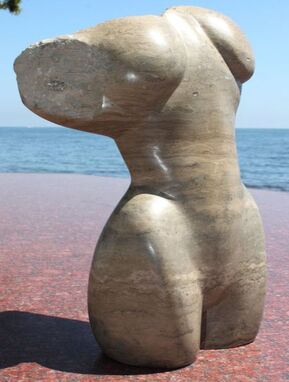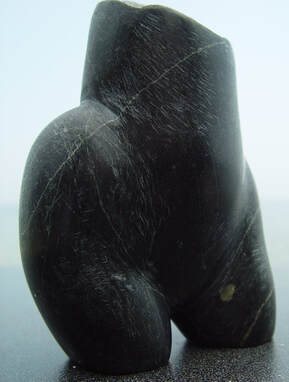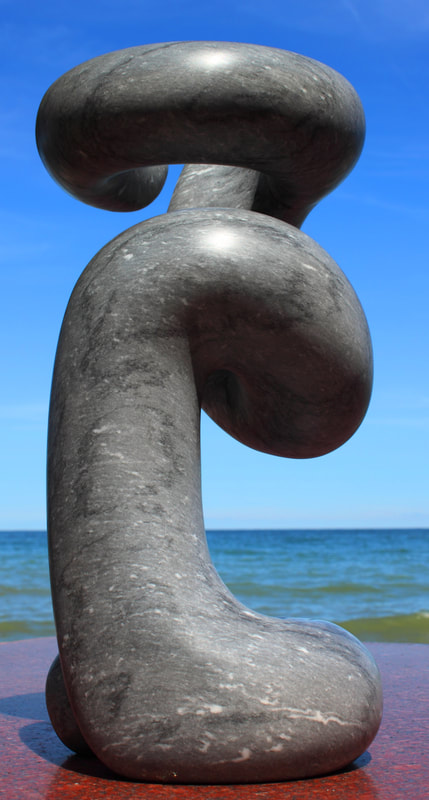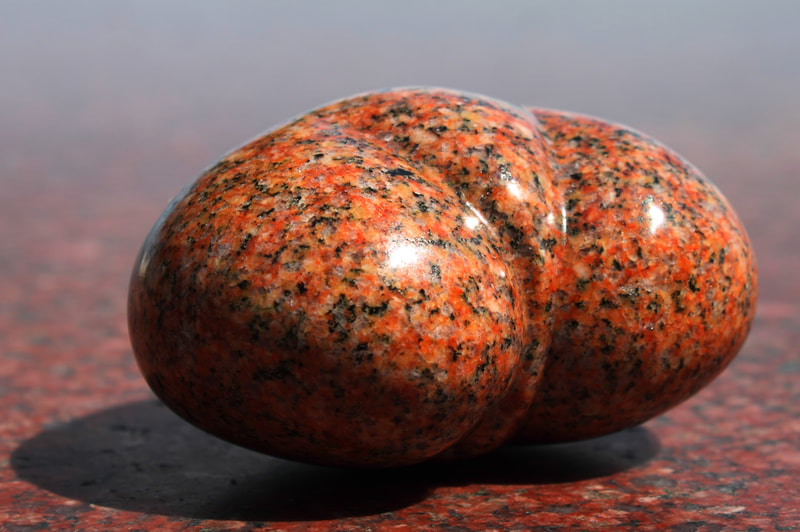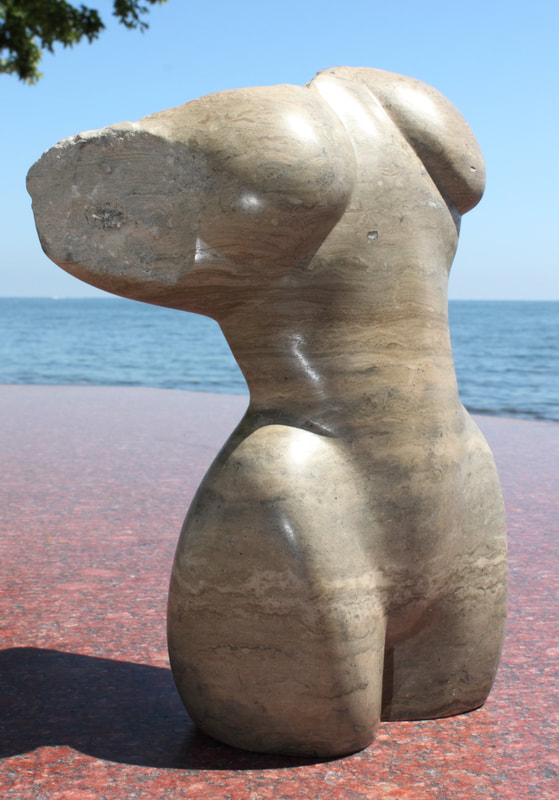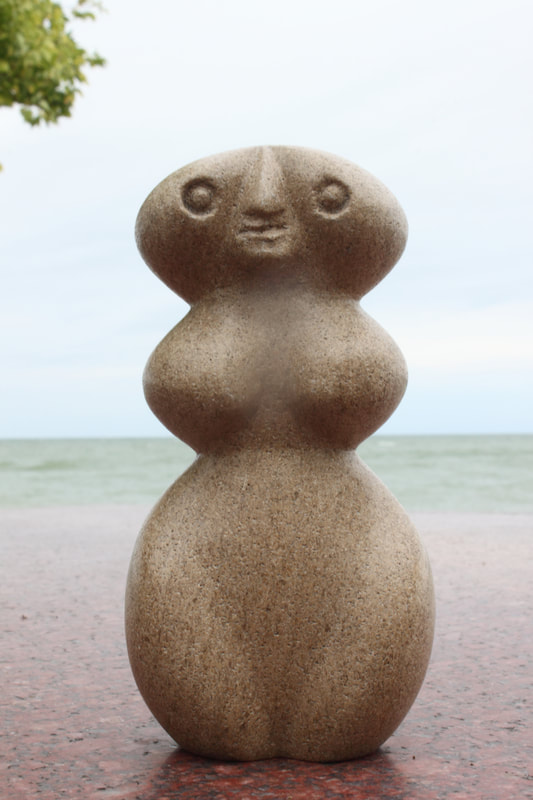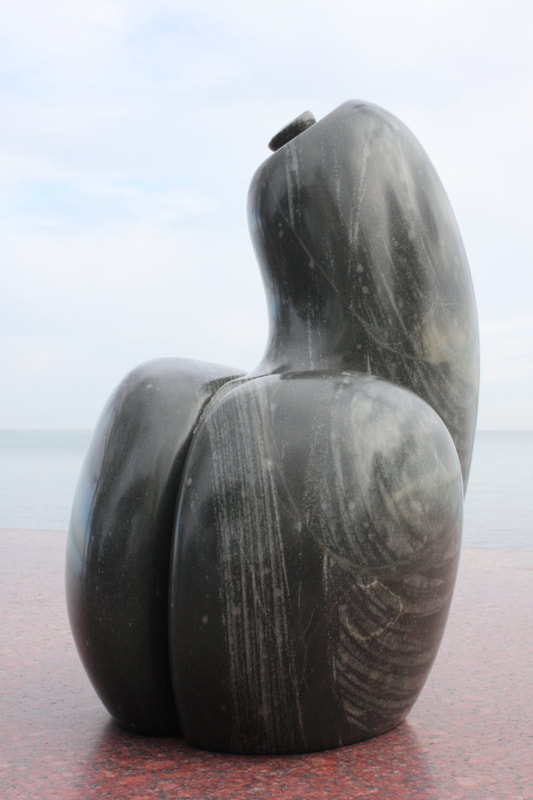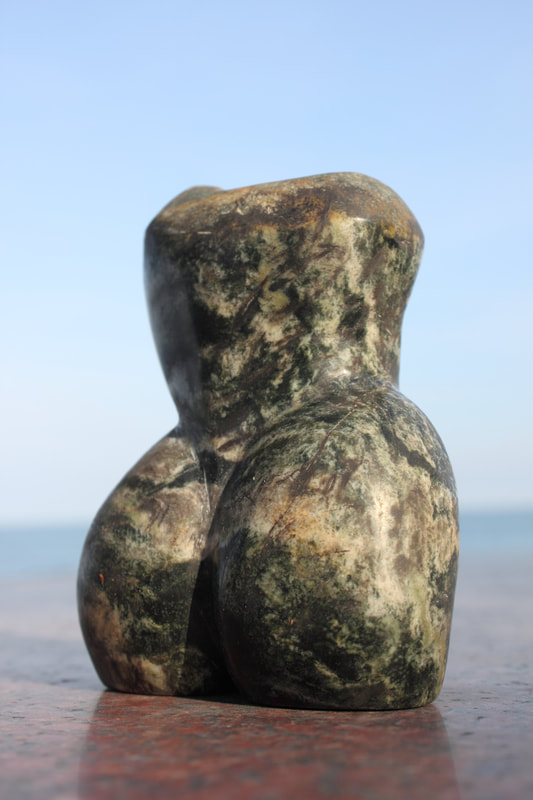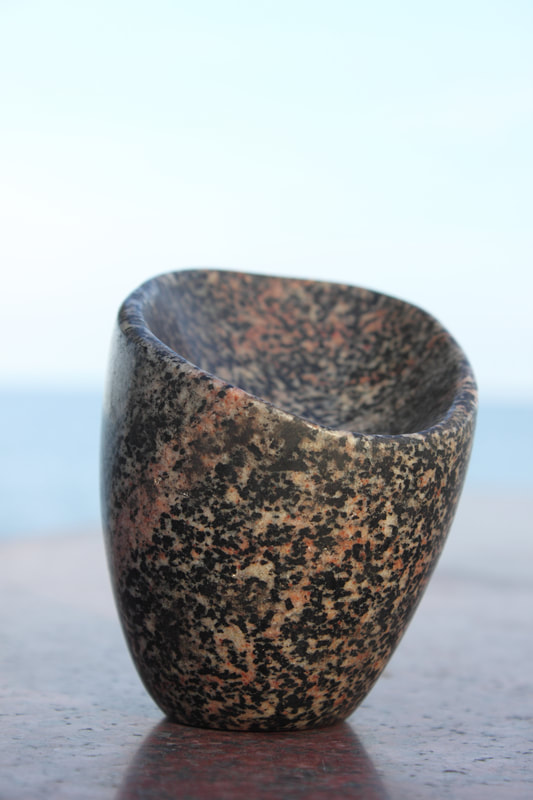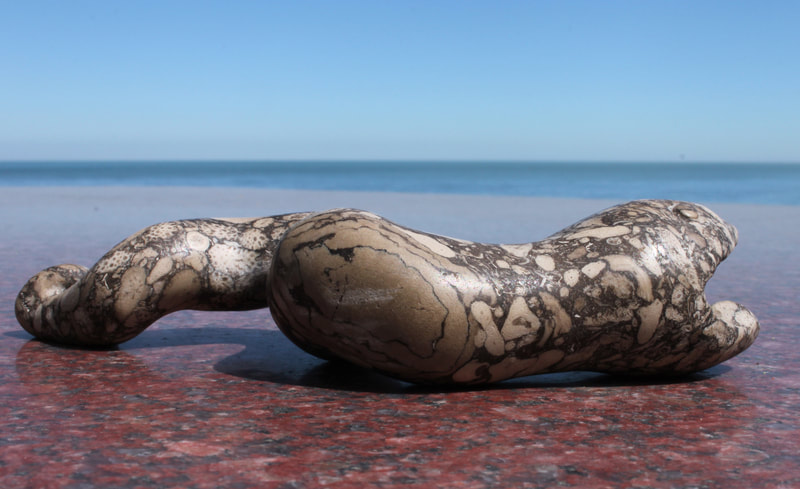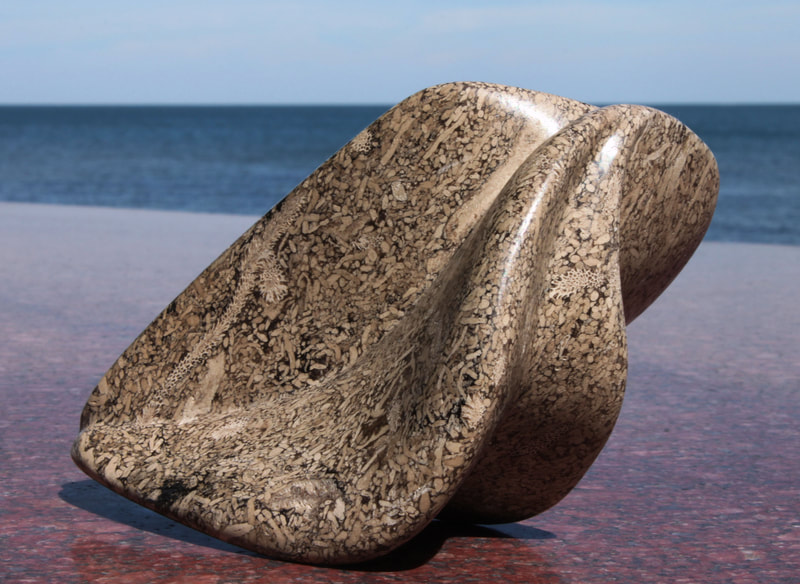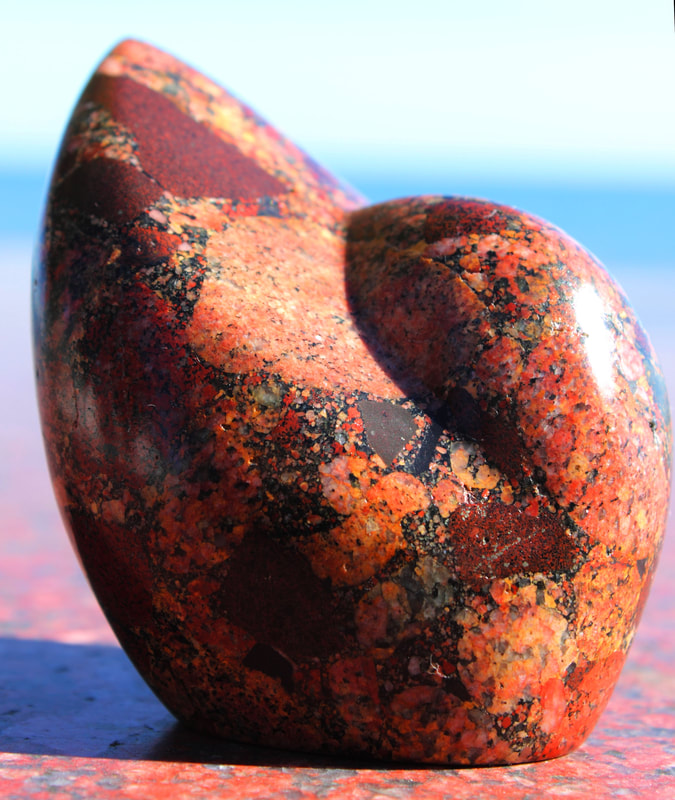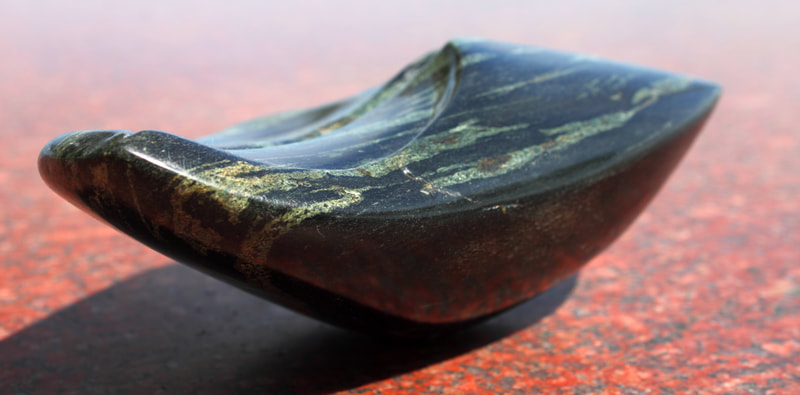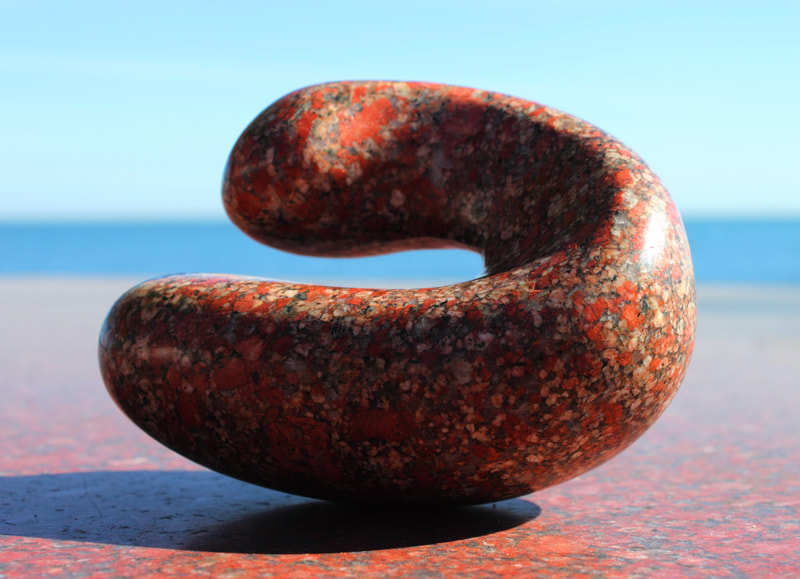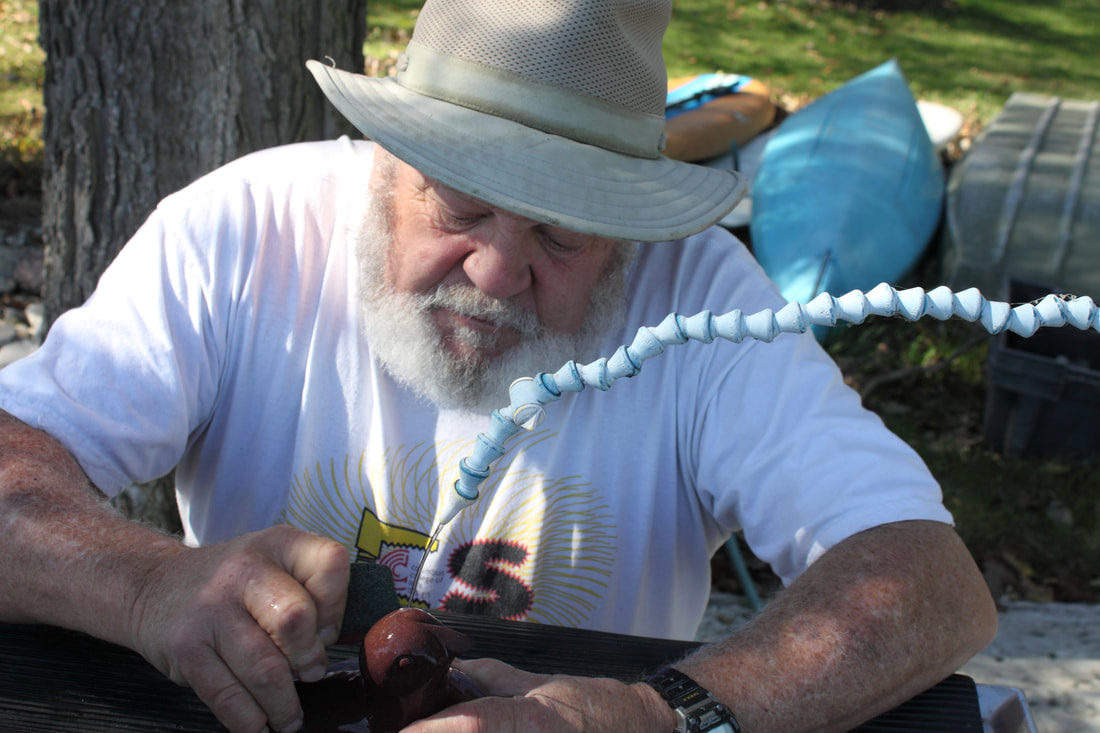From Stone to Sculpture
The Artist writes about the stones on the island:
Then there were rocks unlike the whitish limestone, which is really ninety-nine point nine percent of the mass of the beach. These were colored stones, most often found at the water’s edge. Their specific gravity is greater than that of the limestone, so the limestone is thrown farther by the waves. They are also more resistant, because of their hardness. I collected those I found to be most beautiful. These are the erratics. Later, when I began carving stones I returned to them, thought about why they were the way they were and brought those musings into the language of the work. In college I took a geology class. My interest has not waned.”
The erratics that I carve are granitic and have often undergone some metamorphism. Gneisses mix in with more homogenous areas of crystal growth. Stone from earlier eras is swallowed up or engulfed by subsequent magma movement. One part of the stone sometimes forms way before another.
The darker stones have more metal in them and have come from deeper beneath the surface than the lighter tones. As the stones are harder than steel, which has a hardness of 5.5, steel tools simply crush against the surface.
As the material is so much harder, the finishing process takes much, much longer. I think it’s worth it, however, to use the harder stones because of the history they have had, which can be read in them, and because of their inherently lasting qualities.
The dark, glacial stone is a challenge to photograph due to its metallic nature. The lighter hue is what a sculpture may look like when viewed in the gallery, however in a photograph it looks darker.
The erratics that I carve are granitic and have often undergone some metamorphism. Gneisses mix in with more homogenous areas of crystal growth. Stone from earlier eras is swallowed up or engulfed by subsequent magma movement. One part of the stone sometimes forms way before another.
The darker stones have more metal in them and have come from deeper beneath the surface than the lighter tones. As the stones are harder than steel, which has a hardness of 5.5, steel tools simply crush against the surface.
As the material is so much harder, the finishing process takes much, much longer. I think it’s worth it, however, to use the harder stones because of the history they have had, which can be read in them, and because of their inherently lasting qualities.
The dark, glacial stone is a challenge to photograph due to its metallic nature. The lighter hue is what a sculpture may look like when viewed in the gallery, however in a photograph it looks darker.

